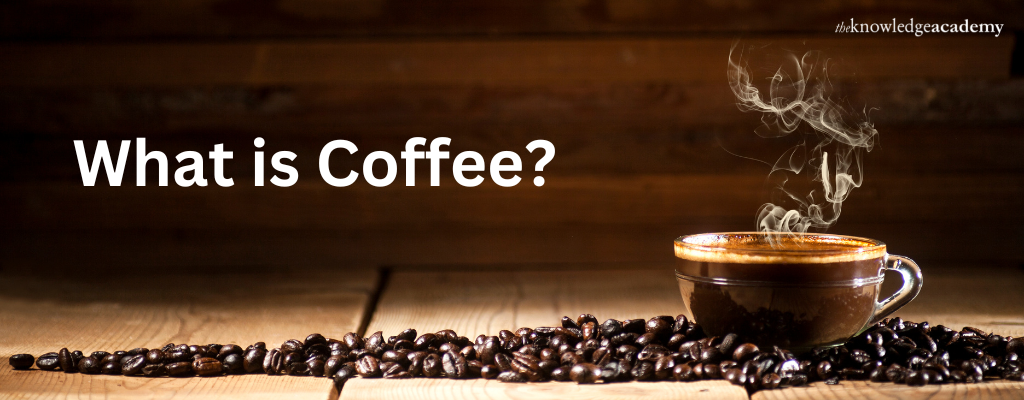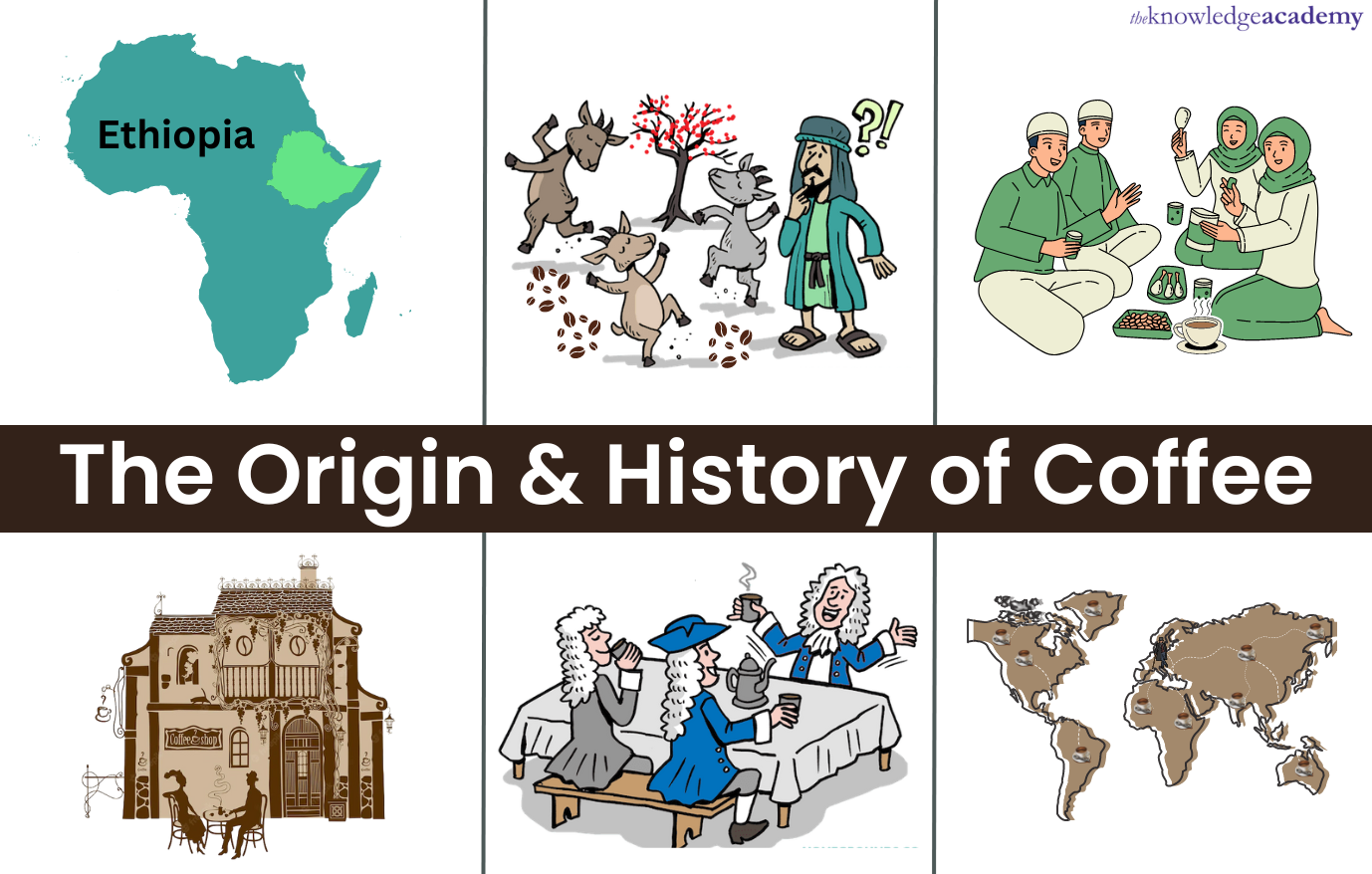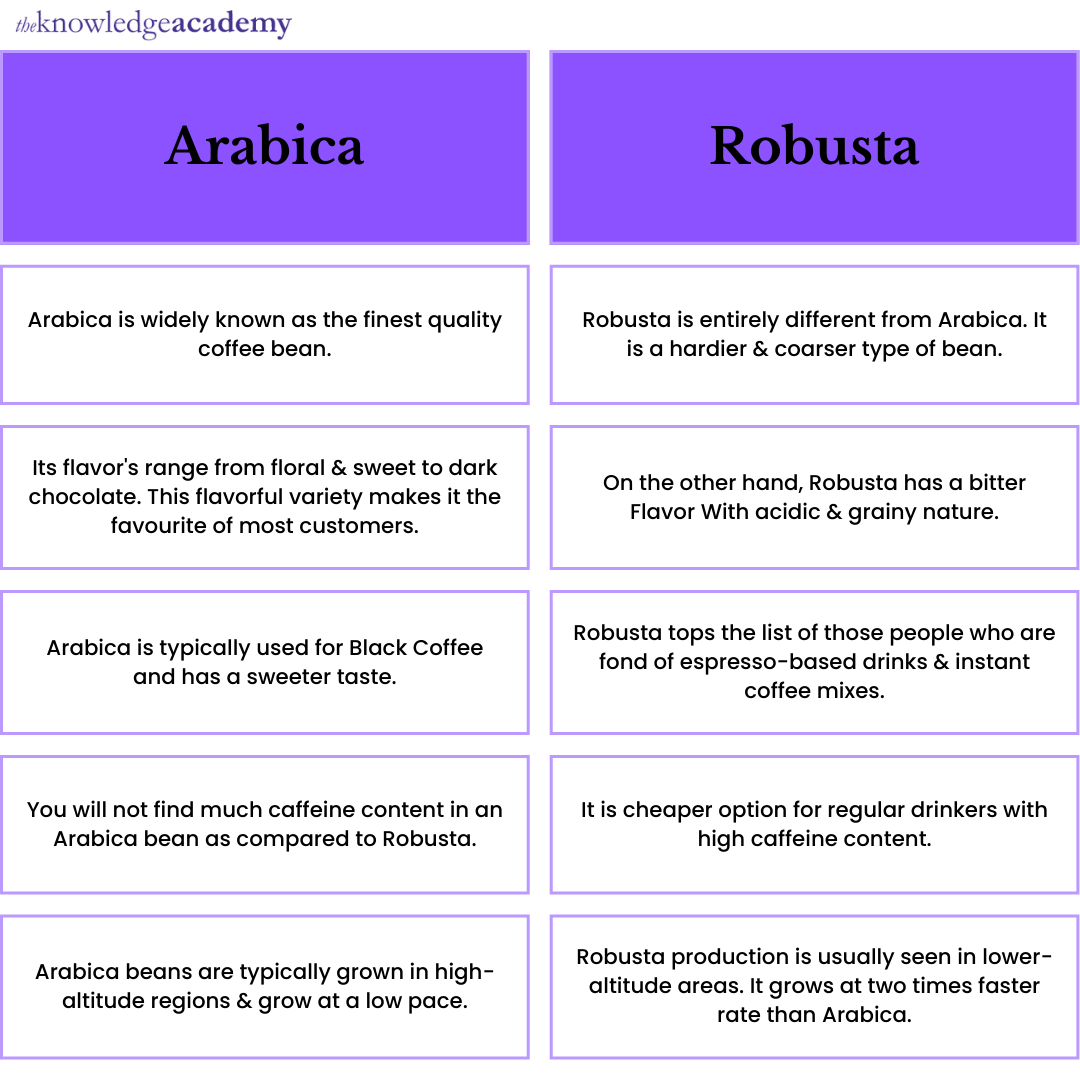We may not have the course you’re looking for. If you enquire or give us a call on 01344203999 and speak to our training experts, we may still be able to help with your training requirements.
Training Outcomes Within Your Budget!
We ensure quality, budget-alignment, and timely delivery by our expert instructors.

When we talk of beverages, the first word that comes to mind is Coffee. The world has been consuming this Coffee for ages. It has become a part of our daily routines now! We all love to head-start our day with that one sip of Coffee and end the day with its comforting touch.
It has become one of the three most favourite and widely consumed beverages. According to Statista reports, global Coffee production reached 175.35 million 60-kilogram bags during 2020-2021. At the same time, the total consumption was 166.63 million 60-kilogram bags during the year.
With such an immense amount of production and consumption worldwide, how can the topic of Coffee not intrigue us? What makes Coffee peculiar? What can be its history, origin, types, and benefits?
To clear your head, let’s learn more about Coffee and its interesting facts.
Through this blog, we will be looking at the following:
Table of Contents
1) What is Coffee?
2) Coffee: origin and history
3) Coffee and its types
4) Benefits of drinking Coffee
5) Conclusion
If you are interested in delving deep into the world of Coffee as a professional or learning for personal use, register for our Basic Barista Course now!
What is Coffee?
We stand at a Coffee shop ordering our favourite flavour, we make the drink at home, enjoy it at parties, and even serve it to welcome uninvited guests at our home. We consume the beverage daily and discuss Coffee to a large extent. Therefore, it becomes important to know our drink, right?
Thus, Coffee is a beverage brewed with boiling water and Coffee beans that have already been roasted and ground.
Coffee plants, which belong to the genus Coffea, are the source of its beans. They are found inside the cherry-shaped fruit of the plant. It takes about a year for a cherry to mature and ripen so its bean can be harvested.
The plant needs a mild temperature and lots of rain to grow. Thus, Coffee belts across the world are usually grown in the areas between the Tropic of Cancer and the Tropic of Capricorn, in the Western Hemisphere, between Mexico in the north and Amazon Rainforest in the South.
But why does Coffee have a bitter taste? Coffee is not only naturally bitter but also acidic in nature. It is due to the over-extraction of the bean. Essentially, the beans are either grounded too finely or brewing is prolonged. However, this bitter-acidic taste makes it the second-most-popular beverage in the world, after water.
Coffee: origin and history
Although there is no scientific proof of the origin of Coffee, some stories mark its emergence from Middle-East Asia during the 15th century. In 850 CE, in Kefa (Keffa), Ethiopia, someone could differentiate a Coffee plant from other herbs in the surroundings for the first time.
According to a popular legend, an Arab goatherd, Kaldi, was grazing his goats when he was amazed by the strange behaviours of his flock. He collected the samples of the plant berries on which the goats were feeding, and on experiencing a sense of exhilaration, he came out with a discovery in front of the world.
During the 15th century, Coffee beans reached Southern Arabia, where the cultivation of the beverage started. It faced a lot of rejection from the religious entities of Islam, as they thought it had the same intoxicating elements as alcohol. However, Coffee consumption increased with more and more Coffeehouses coming into existence.
Similarly, when Coffee reached European countries during the 16th-17th centuries, it was not welcomed with open arms. It continuously faced rejections and approvals for political, religious, and medical concerns.
Until the end of the 17th century, Coffee production and supply were limited to the African-Arabian land. Eventually, with the onset of colonisation, the introduction of Coffee to third-world countries made its production catch pace.
Thus, in the late 19th and early 20th centuries, industrial roasting, grinding, and Coffeehouses were set up on almost every street and corner of the world.

Coffee and its types
It is complicated to trace the exact date when people started consuming Coffee. It has been ages now! But if you are to ask the Coffee enthusiasts (an individual or a group of individuals) about their favourite flavour, they will only name 5-6 types.
You can differentiate Coffee and its types in the following ways:
Let’s begin with the different types of Coffee beans

Coffee roasts
Some of us like our Coffee perfectly roasted, while others may prefer a light roast. However, many of us may be simply ordering a Coffee, regardless of its roast, which might land you disliking a flavour, even if it were the finest one.
End the confusion here!
Roasting means mixing the Coffee beans to get an augmented flavour that ultimately increases their solubility.
Roasts are also of different types:
1) Light roast: a light roast means a higher acidity, light flavour, and aroma. For example, cinnamon roast and city roast.
2) Medium roast: when a Coffee bean is given a medium roast, it will have a stronger flavour (not overpowering) and a roast taste. For example, Americano Coffee and breakfast roast.
3) Dark roast: dark roast, also known as rich roast, has a strong aroma and flavour. Its bitterness can also be noticed. However, it has lesser acidic content.
Different types of Coffee flavours
There exist more than 850 types of Coffee flavours. Thus, even if you are not a Coffee lover, you might have heard of the most common flavours. Considering the fact that there is such a wide variety of options, it isn't easy to try each flavour carefully.
You need not worry more. Let's end up the quest here. Here are the most common types of Coffee:
1) Regular Coffee: A regular Coffee includes a black with no cream, milk, sugar or sweetener. For example, café au lait, iced, Latte (decaffeinated).
2) Espresso drinks: Examples could be, Latte, cappuccino, Americano (with hot water), Doppio, Cortado, Flat white, red eye, and if you like your Coffee with dessert, affogato would be a good choice.
3) Coffee chain specialities: This may range from espresso to instant Coffee mixes. For instance, mochaccino Coffee, gelato Coffee, and pumpkin spice latte.
Brewing methods
A perfectly brewed espresso can impact the flavour and strength of the Coffee. Coffee professionals (baristas) use a diverse range of brewing methods. While some brewing methods have been used for ages; on the other hand, with the advent of technology, machines have replaced those techniques.
Although, it depends upon the Coffee shop and Barista which technique they want to use.
Following are some Coffee brewing methods:
1) Drip Coffee: drip Coffee is the forever favourite of Coffee lovers. It is called a ‘drip’ as the hot water drips through the Coffee grounds, picking up the Coffee's aroma and flavour.
2) Pour-over: fundamentally, it is a drip Coffee minus the machine. Holding a Coffee filter over the Coffee-filled portion of your cup, slowly pour hot water into the filter. This way, you will get a fine pour-over Coffee.
3) French press: soak large portions of Coffee in hot water as you place it into a machine. Then, press down the plunger after a few minutes. It is also called a long press Coffee, which takes time and practice.
4) Espresso: espresso-based Coffee drinks are one of the most popular ones. It introduces pressure into the process of making Coffee. In simple terms, when pressurised water is forced through compacted, fine Coffee grounds, it produces richer, thicker, and creamier Coffee.
5) Cold brew: no heat is required to make this kind of Coffee. Ground Coffee is steeped in cold or normal water for 12-24 hours. After filtering, cold brew usually requires dilution because it is strong. Nowadays, this type of Coffee is replaced by Nitro which uses nitrogen and a lesser time to be soaked.
This is just scratching the surface. Suppose you want to know more about the wide variety of flavours. Then, you possibly cannot. Nobody can name each and every Coffee that exists.

Benefits of drinking Coffee:
While many of us drink Coffee for the sake of it, the beverage also contains certain benefits that cannot be ignored.
Following are some of the benefits of drinking Coffee:
1) Coffee lowers the risk of diabetes. According to PubMed, people who regularly drink Coffee are less likely to develop type 2 diabetes than those who don't. Coffee contains high polyphenol, called chlorogenic acid, which reduces blood sugar levels and their intensities.
2) If you drink Coffee regularly, then you are a lucky one. Regular Coffee consumption lowers the risk of developing depression-like disorders. Caffeine blocks the neurotransmitter adenosine, so it cannot release norepinephrine. Thus, it plays a crucial role in retrieving memory.
3) The dangers of liver cancer can also be reduced with the consumption of Coffee. It is due to the compounds inside Coffee that reduces liver enzymes and slow the development of liver diseases.
4) Coffee will help you boost your mood. Caffeine works as an antidepressant that enhances the transmission of mood-regulating dopamine.
5) Your brain and heart will be happy if you consume a little coffee daily. The beverage contains several active compounds that lower cholesterol and blood pressure levels.
Conclusion:
Are you feeling lazy? Take a shot of espresso or doppio to get rid of the tiredness. If you want to feel comfortable and slouch on your couch for the day, try Irish Coffee. Even if you are in the mood to get some booze, a shot or two of espresso martini will be a good choice. Further, the regular consumption of Coffee will benefit you.
If you want to learn and excel in fields like Coffee Brewing, Phone Repair, Floristry, and many more, try our Industry Training course today!
Frequently Asked Questions
Upcoming Business Skills Resources Batches & Dates
Date
 Basic Barista Course
Basic Barista Course
Fri 19th Jul 2024
Fri 25th Oct 2024







 Top Rated Course
Top Rated Course




 If you wish to make any changes to your course, please
If you wish to make any changes to your course, please


